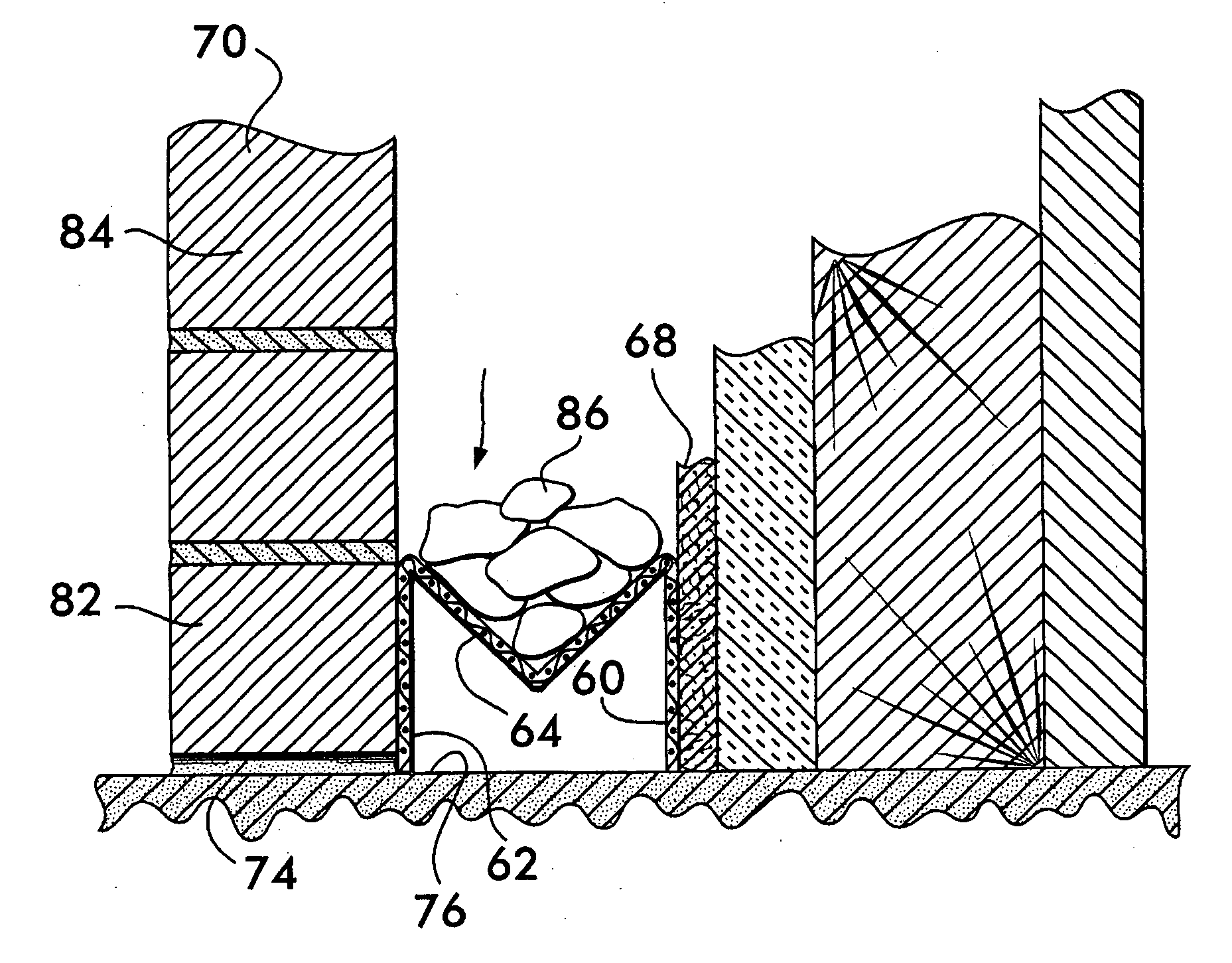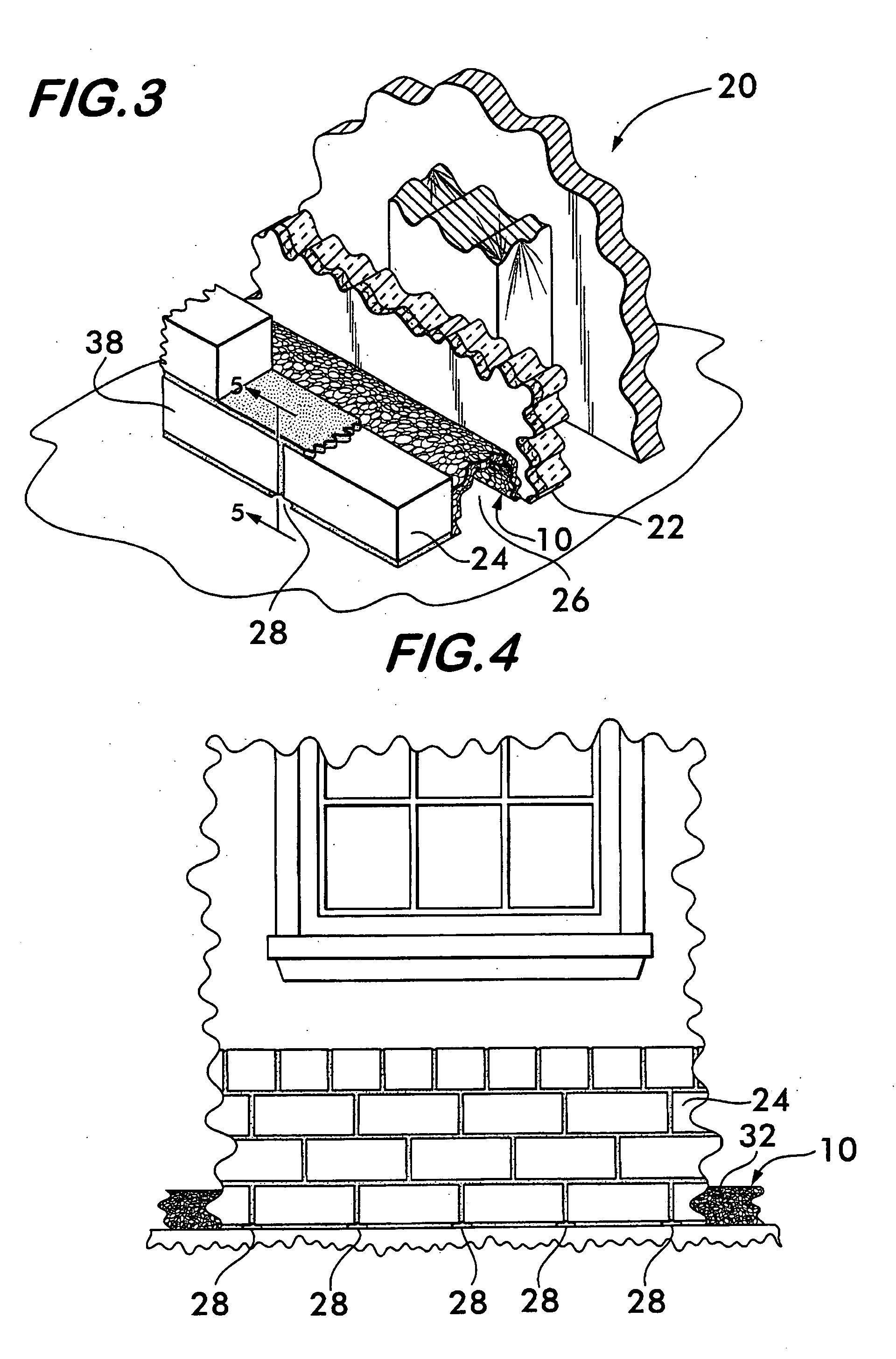Masonry cavity wall and method of assembly
- Summary
- Abstract
- Description
- Claims
- Application Information
AI Technical Summary
Benefits of technology
Problems solved by technology
Method used
Image
Examples
first embodiment
[0022] In the present invention illustrated in FIGS. 1-5, the blocker 10 is provided as a relatively-flat strip of material having a width “W1” (as measured in a flat condition) greater than a width “W2” of the wall cavity in which it is to be installed. The strip of material 10 is sufficiently flexible at least along a longitudinally-extending central section 12 thereof to permit the normally flat strip 10 to be inserted within the cavity in a bowed or inverted U-shape across its width. Thus, a pair of longitudinally-extending side sections, 14 and 16, of the strip 10 engage opposed wall surfaces that define the cavity, and the longitudinally-extending central section 12 forms an upwardly-projecting, debris-collection canopy therebetween that bridges the opposed walls.
[0023] The blocker 10 possesses a degree of resiliency such that, when flexed or folded along its longitudinally-extending central section 12, the strip exerts a force to expand to its normal relatively-flat condition...
second embodiment
[0030]FIGS. 6-9 illustrate the present invention. The blocker 50 is provided as an elongate strip of material 52 that can be folded, bent, or flexed into an “M”shape in transverse cross section (see FIG. 7). Preferably, the material 52 has three longitudinally-extending creases, or fold lines, 54, 56 and 58, permitting the sheet of material 52 to be folded, bent or flexed into the M-shape. The legs 60 and 62 of the M-shaped blocker 50 can be engaged with the opposed wall surfaces of a wall cavity, and a central section 64 of the M-shaped blocker provides a debris collection surface, or trough, that bridges the opposed walls.
[0031] Preferably, the blocker 50 possesses a degree of resiliency such that, when flexed or folded along its creases, 54, 56 and / or 58, into a compressed M-shape, the blocker 50 exerts a force to expand outwardly in an accordion manner. For example, see the dashed lines illustrated in FIG. 7 showing the blocker in an expanded condition. In this way, when compres...
PUM
 Login to View More
Login to View More Abstract
Description
Claims
Application Information
 Login to View More
Login to View More - Generate Ideas
- Intellectual Property
- Life Sciences
- Materials
- Tech Scout
- Unparalleled Data Quality
- Higher Quality Content
- 60% Fewer Hallucinations
Browse by: Latest US Patents, China's latest patents, Technical Efficacy Thesaurus, Application Domain, Technology Topic, Popular Technical Reports.
© 2025 PatSnap. All rights reserved.Legal|Privacy policy|Modern Slavery Act Transparency Statement|Sitemap|About US| Contact US: help@patsnap.com



